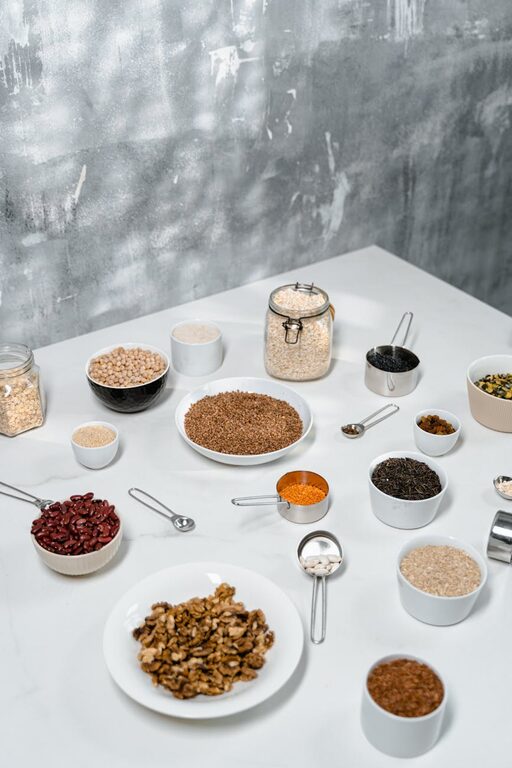Planning meals from pantry staples is a smart way to make cooking easier, save money, and reduce food waste. Whether you’re short on fresh ingredients or just want to simplify your weeknight dinners, your pantry can be a treasure trove of nutritious and tasty options. In this post, we’ll explore how to turn basic pantry items into satisfying meals with clear steps, helpful tips, and easy recipes.
Why Plan Meals from Pantry Staples?
Using pantry staples for meal planning helps you:
– Save money by relying on affordable, long-lasting ingredients.
– Reduce last-minute grocery trips.
– Lower food waste by using what you already have.
– Create quick and flexible meal options.
Before diving in, it helps to take stock of your pantry and get familiar with versatile staples you might already have.
Step 1: Take Stock of Your Pantry
Start by organizing and inventorying your pantry contents. Common staples include:
– Grains: rice, pasta, quinoa, oats
– Canned goods: beans, tomatoes, tuna, coconut milk
– Baking essentials: flour, sugar, baking powder
– Oils and vinegars: olive oil, vegetable oil, apple cider vinegar
– Spices and herbs: salt, pepper, garlic powder, chili flakes
– Nuts and seeds: almonds, sunflower seeds, chia seeds
– Broths or bouillon cubes
Write down what you have and note expiration dates. Knowing this will help you plan meals efficiently and avoid waste.
Step 2: Identify Complementary Fresh Ingredients
While pantry staples form the base of your meals, fresh items often enhance flavor and nutrition. Think about what fresh produce, dairy, or proteins you typically keep on hand or can grab easily:
– Vegetables: onions, garlic, carrots, potatoes
– Fruits: lemons, limes, apples
– Dairy or alternatives: milk, cheese, yogurt
– Proteins: eggs, chicken, tofu
Consider buying these regularly to pair with pantry staples.
Step 3: Build Your Meal Plan Around Pantry Staples
When planning meals, start with key pantry ingredients and match them with fresh items or condiments to create balanced dishes. For example:
– Pasta with canned tomatoes and herbs: combine pasta, canned tomatoes, garlic, and dried basil to make a quick sauce. Add fresh vegetables or cheese if available.
– Rice and beans bowl: use rice and canned beans as a base, then add spices, sautéed onions, and any fresh veggies for a filling meal.
– Soup or stew from canned goods: mix broth, canned beans, tomatoes, and vegetables to prepare a comforting soup.
Try to vary the cuisines and flavors by changing spices or cooking techniques. This keeps meals interesting.
Step 4: Use Meal Planning Tools and Templates
To stay organized, use a simple meal planning template. List your meals each day, ingredients needed, and cross-check with your pantry list. Apps or printable planners work well.
You can also batch cook or pre-chop vegetables at the start of the week to reduce cooking time on busy days.
Step 5: Stock Up Wisely to Enhance Flexibility
Stock your pantry with a variety of staples that lend themselves to multiple recipes. Here’s a suggested list:
– Different grains: white rice, brown rice, couscous
– Various canned beans: chickpeas, kidney beans, black beans
– Tinned fish: tuna, sardines
– Canned or jarred vegetables: artichokes, roasted red peppers
– Sauces and condiments: soy sauce, hot sauce, mustard
– Baking staples: yeast, cornmeal, cocoa powder
Having these on hand gives you many options to mix and match.
Easy Meal Ideas Using Pantry Staples
Here are some quick recipes to get you started:
1. Chickpea Curry
Ingredients:
– Canned chickpeas
– Coconut milk
– Canned diced tomatoes
– Curry powder
– Onion, garlic (fresh or powdered)
– Rice or naan bread to serve
Method: Sauté onion and garlic, add curry powder, chopped tomatoes, chickpeas, and coconut milk. Simmer until thickened. Serve with rice or bread.
2. Tuna Pasta Salad
Ingredients:
– Pasta
– Canned tuna
– Olive oil
– Lemon juice
– Canned corn or beans
– Salt and pepper
Method: Cook pasta and cool. Mix with tuna, corn, olive oil, and lemon juice. Season to taste.
3. Lentil Soup
Ingredients:
– Lentils (dried or canned)
– Vegetable broth or bouillon
– Carrots, celery, onion (fresh or dried)
– Garlic and herbs
Method: Cook vegetables, add lentils and broth, simmer until lentils are tender. Season with herbs.
Tips to Maximize the Use of Pantry Staples
– Rotate your pantry regularly to avoid expired items.
– Label containers to keep track of contents.
– Learn which staples pair well with which spices.
– Prep ingredients ahead of time when possible.
– Experiment with recipes to find what you like.
Conclusion
Planning meals from pantry staples is a practical approach to stress-free cooking. With a well-stocked pantry, some fresh ingredients, and a little creativity, you can whip up delicious meals anytime. Start by taking inventory, organizing your staples, and building simple meal plans around what you have. Over time, you’ll find this method saves you money, time, and effort – while still feeding your family well.
Happy cooking!

